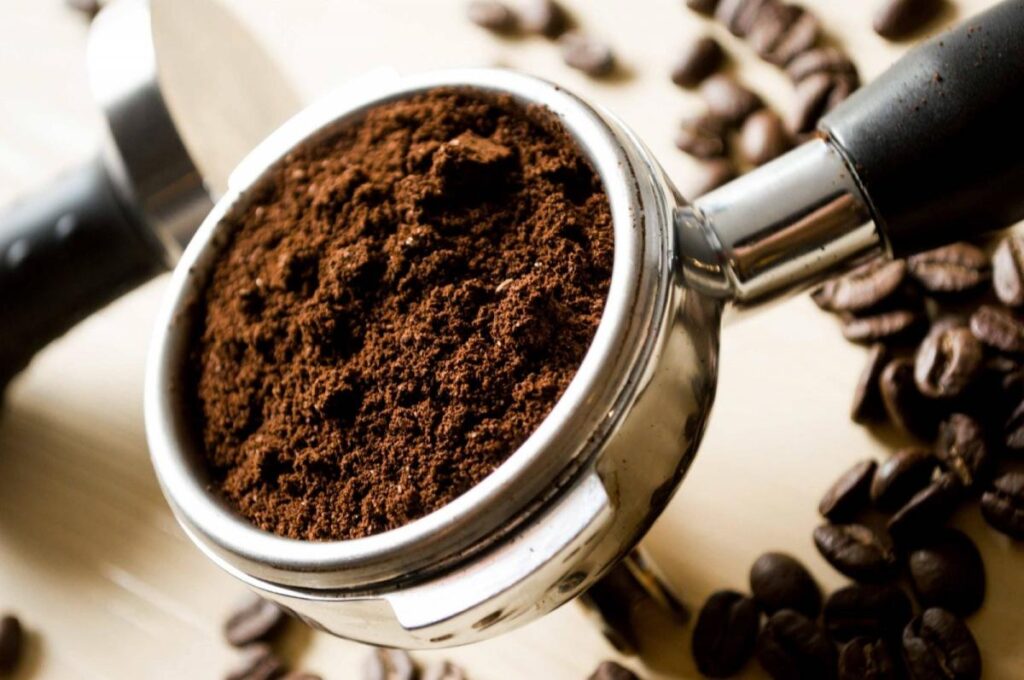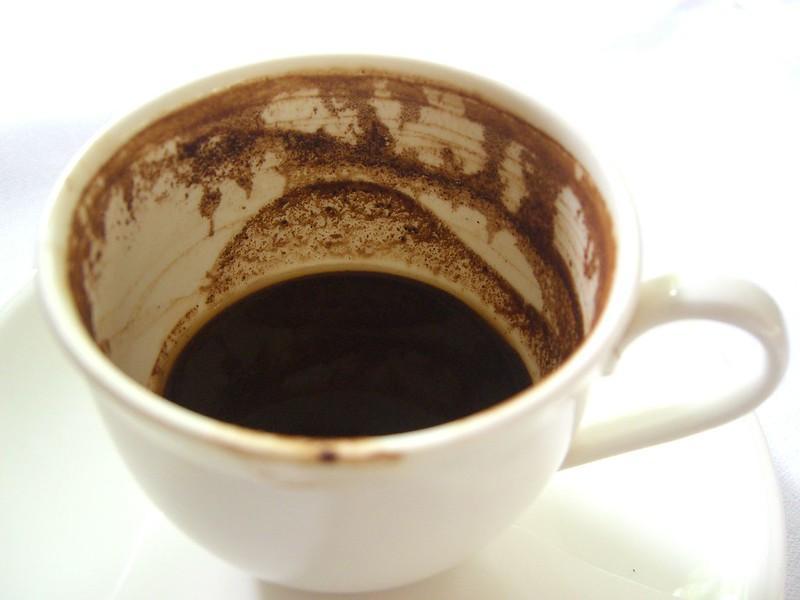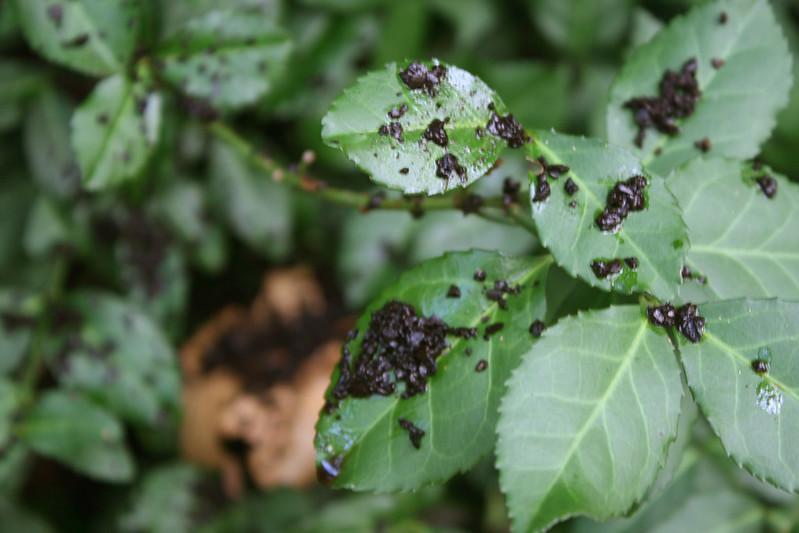When it comes to warming up the body, there is no denying that coffee works like a charm (especially during the pre-noon hours). However, its usefulness is not just restricted to the realm of kitchen endeavors. This caffeinated staple is just as beneficial in the garden, where specialists use coffee grounds to help their plants. Some gardeners, however, contend that using coffee grounds is unproductive or, worse, damaging to plants.

Coffee grounds – leftovers from brewing coffee are rich in nitrogen and other nutrients needed for plant growth.
One 2016 study found that growing radishes, broccoli, leeks, violas, and sunflowers with used coffee grounds (with or without fertilizer) resulted in inferior growth in all soil types. However, coffee grounds increased the soil’s ability to hold water and reduced the number of weeds, which is good news. Researchers think that poor growth might be related to the toxic chemicals in coffee grounds.
Depending on how involved you are in gardening, you might also be aware that the practice of placing leftover coffee grounds in a garden is a contentious and much-discussed topic. Some people believe using coffee grounds to grow plants is the best thing you can do for your garden, while others argue that it is the worst.
So, which viewpoint is correct, and how can you know which to believe?
For your convenience, we have researched both the positive and negative aspects of using coffee grounds in gardens and have summarized our findings below.
Using Coffee Grounds As Mulch

Mulches protect soil moisture, improve its nutritional status, reduce erosion, and decrease weed growth.
Using mulch in your garden can have several positive effects, not only on the plants but also on the soil. However, it is notoriously difficult to obtain sufficient quantities of compost, straw, or other organic mulches at a reasonable price.
This is when coffee grinds come in. Coffee grounds are popular among gardeners as a mulching material for their plants. It is said that a coffee mulch will attract earthworms and acidify the soil, both of which are beneficial for acid-loving plants.
As the organisms, including the earthworms in the soil, break down the coffee grounds, they add nitrogen to the soil and improve its structure.
So it may appear that using coffee grounds is the ideal solution to your mulching problems. However, some gardeners have discovered that directly applying coffee grinds to the soil has a negative impact on plants.
To begin with, coffee grounds tend to become overly compact, which is not good. Your mulch must breathe in order to allow water and air to enter and exit the soil. Coffee also includes caffeine, which has been shown to inhibit plant growth.
Therefore, if coffee grinds are put in an excessively thick layer, they might actually cause damage to the roots of seedlings by stifling their growth.
So, Should You Use Coffee Grounds As Garden Mulch?
Well, if you happen to have some leftover coffee grounds hanging around, there is no reason to toss them away. They may be used as mulch, but not alone.
Coffee grinds should be combined with other organic materials, such as compost or leaf mold, before being used as mulch. Alternatively, you might rake the coffee grounds into the top layer of the soil so that they cannot clump together.
I myself have used coffee grounds as mulch around my blueberry plants, and honestly speaking, I am pleased with myself.
Using Coffee Grounds In Compost

Compost feeds the soil, functions as a probiotic, and acts as a sponge, making it more fertile and productive.
Everyone has heard of composting. Compost offers numerous advantages, both environmentally and in terms of maintaining the integrity of your lawn and garden soil. Composting material is classified into two types: green and brown.
Green composting material includes kitchen leftovers and grass clippings. While straw, hay, and fallen leaves are brown composting materials. Green composting material contains trace elements such as magnesium, calcium, potassium, and zinc, all of which are required for healthy plant growth. Despite their brown color, coffee grounds, like plant debris and grass clippings, are considered green composting materials.
Coffee grounds can be used in composting, which is a terrific way to put something to use that would otherwise end up taking space in a landfill somewhere. In fact, adding coffee grounds to compost is the safest method to use them.
Coffee grinds contain about 1.45 percent nitrogen by weight. They also include trace amounts of magnesium, calcium, potassium, and other minerals. Coffee grounds (paper filter and all) can be thrown into your green compost bin, but you must combine your green compost with some brown compost before spreading it in the garden.
According to scientists, a balance of “greens” and “browns” is required to provide the right environment for composting to occur.
However, there are also a few schools of thought that oppose the use of used coffee grounds in compost. In order to determine the impact of adding coffee grounds to your compost, one study tested three different composting techniques.
They discovered an increase in the death rate of earthworms using all three approaches.
So, Should You Add Coffee Grounds To The Compost?
Well, in the event that you decide to compost coffee, use it sparingly. It must be counterbalanced by brown compost material, such as newspapers and dried leaves. As a general rule, the ratio of brown to green compost material should be 4:1.
If your compost pile contains excessive green stuff, it will begin to smell. However, the compost pile will not heat up if you do not have enough.
Using Coffee Grounds As Fertilizer

Fertilizers make the soil healthy and replace the nutrients that plants remove from the ground.
Farmers and households use fertilizers regularly to help crops and gardens grow. And this is where coffee grounds come in! Coffee grounds include a variety of vital nutrients as well as micronutrients, making them ideal for use as plant fertilizer.
Using coffee grounds as fertilizer also adds organic material to the soil, improving drainage, water retention, and soil aeration. The pH of used coffee grounds is close to neutral. Thus their acidity should not cause worry.
However, this only holds true for used coffee grounds. Fresh coffee grounds have an acidic pH. Coffee grinds will release nitrogen in minute amounts, especially when mixed with dry materials, making them an excellent slow-release fertilizer.
Another advantage? Worms enjoy the smell of coffee grounds. By including coffee grounds, you will make your green environment more appealing to worms which will, in turn, improve the structure of your soil.
However, using used coffee grounds as fertilizer has a few drawbacks that should be considered. The growth of certain plants, such as geranium, asparagus fern, Chinese mustard, and Italian ryegrass, can be inhibited using used coffee grounds.
In addition, the grounds of coffee prevent the development of seeds of both red and white clovers as well as alfalfa.
So, Should You Use Coffee Grounds As Fertilizer?
Work the coffee grounds into the soil around your plants to make fertilizer out of used coffee grounds. You may either scratch it into the top couple of inches of soil, or you can just sprinkle the grounds on top of it and leave it there.
Just keep in mind that you don’t want to use too much of it or pack it in too tightly. The microscopic particles have the potential to clump together and form a barrier in your garden that is impermeable to water.
A liquid plant fertilizer can also be made from diluted coffee that has been left over from the previous day. Just combine two cups of ground coffee from brewed coffee with five gallons of water in a bucket and let it sit there for the night.
Coffee Grounds As Pesticide

Coffee grounds are frequently used to deter garden pests like slugs, snails, rabbits, and fire ants.
Many people swear that spreading spent coffee grounds in garden beds can get rid of slugs and snails. Some people also believe applying them to the soil will act as a cat deterrent and prevent cats from using flower and vegetable beds as litter boxes.
The same thing has been thought about ants. However, there is no scientific evidence to support this theory. However, there are two possible explanations for why anything like this may occur. Either the grounds have a rough surface that makes it uncomfortable for soft-bodied animals like slugs and snails to crawl over them, or the caffeine in the grounds deters ants and cats, causing them to avoid caffeine-sprinkled areas.
The only way to find out if using coffee grounds as a natural pesticide in your garden will be helpful is to try it out and see if it works. However, you should be aware that some studies disagree with this recommendation and believe it to be ineffective.
So, if it doesn’t work, you should have a backup plan in place. Additionally, because the grounds can potentially stunt plant growth, you shouldn’t place them too close to the plants that you are trying to safeguard.
Other Uses For Coffee Grounds
- While used coffee grounds have an almost neutral pH, fresh coffee grounds are acidic. So, they can be used to boost the growth of your acid-loving plants such as hydrangeas, blueberries, carrots, azaleas, lily of the valley, and radishes.
- If you are doing vermicomposting with a worm bin, you may also consume used coffee grounds as food for the worms. Soil worms tremendously enjoy the coffee grounds as a food source and come running to its smell.
- Because of their potential allelopathic effects, using fresh coffee grounds could also be effective in weed control. Also, some evidence suggests that coffee grounds can inhibit the growth of certain fungal infections.
Final Thoughts
Gardening and coffee grinds go together naturally. They are a valuable addition to your compost heap and soil if handled with care and applied with a bit of common sense. Coffee grounds are free organic matter, whether a by-product of your regular brew at home or gathered from coffee businesses who are only too happy to give them away for free.
If you’re a dedicated gardener who feels like something’s been lacking from your efforts, used coffee grounds might be the solution.
And now that you are informed of the facts, you will be able to take part in the heated debate that will be taking place over coffee grounds at the next garden club meeting.
Frequently Asked Questions
Are coffee grounds harmful to dogs?
Caffeine, found in coffee beans, grounds, and brewed coffee, is very toxic and dangerous for cats and dogs. Caffeine can be fatal if consumed by dogs or cats since they are more susceptible to it than humans. Aged or sick dogs are especially vulnerable to the toxic effects of caffeine in coffee grounds.
Which plants do not like coffee grounds?
Coffee grounds are quite acidic. Hence they should only be used for acid-loving plants. Coffee grinds will prevent seed germination and root growth for plants that like neutral or slightly alkaline soils, such as Chinese mustard, geranium, asparagus fern, and Italian ryegrass. Therefore, before adding coffee grinds to your soil, research your plants.
Do coffee grounds repel rats?
Coffee grounds, particularly grounds that have been exposed to hot water during the brewing process, have a notably bitter flavor and strong smell. Some people believe that the double-whammy approach is the most effective way to discourage rats. However, there is no evidence to back it up in the scientific community.
So, if you want to repel rats, do something else.
What are leftover coffee grounds good for?
Coffee grounds are an excellent addition to compost bins and gardens. The gardening community refers to them as “green,” or nitrogen-rich.
Furthermore, the caffeine and antioxidants in coffee grounds can aid in treating under-eye circles and other symptoms of aging skin.
Additionally, their abrasiveness makes them an excellent cleaning scrub around the house.
Do tomato plants like coffee grounds?
Tomato plants thrive in slightly acidic soil. Therefore, it stands to reason that coffee grounds benefit tomato plant health. Furthermore, coffee grounds contain about 2% nitrogen along with phosphate and potassium, which are essential for healthy tomato plant growth.
Sources For Further Reading
Coffee Grounds and Composting – Oregon State University Extension Service
Using Coffee Grounds in Your Garden – University of Connecticut Extension Service
Using Coffee Grounds in the Garden – Sustainable Gardening Australia
Editor’s Recommendations
Mushrooms In Houseplants? This is Why They Are A Good Sign
What Is Leca and Is it Useful for Plants? All The Plant Care Questions and Answers
Enrich Soil of Indoor Plants With Eggshells for Happy Plants and Soil!







